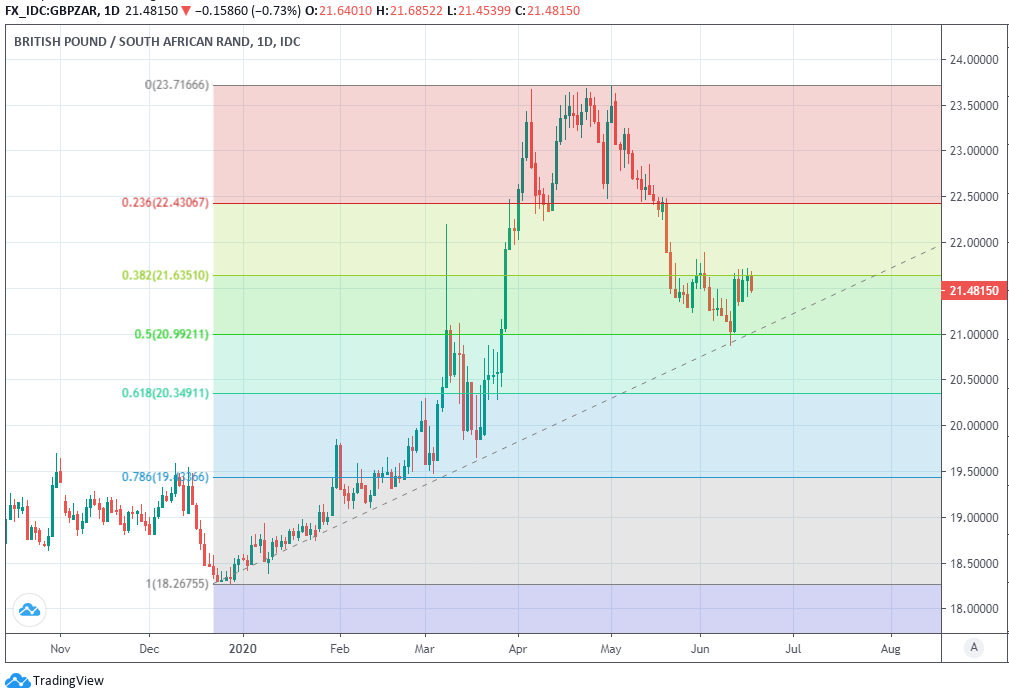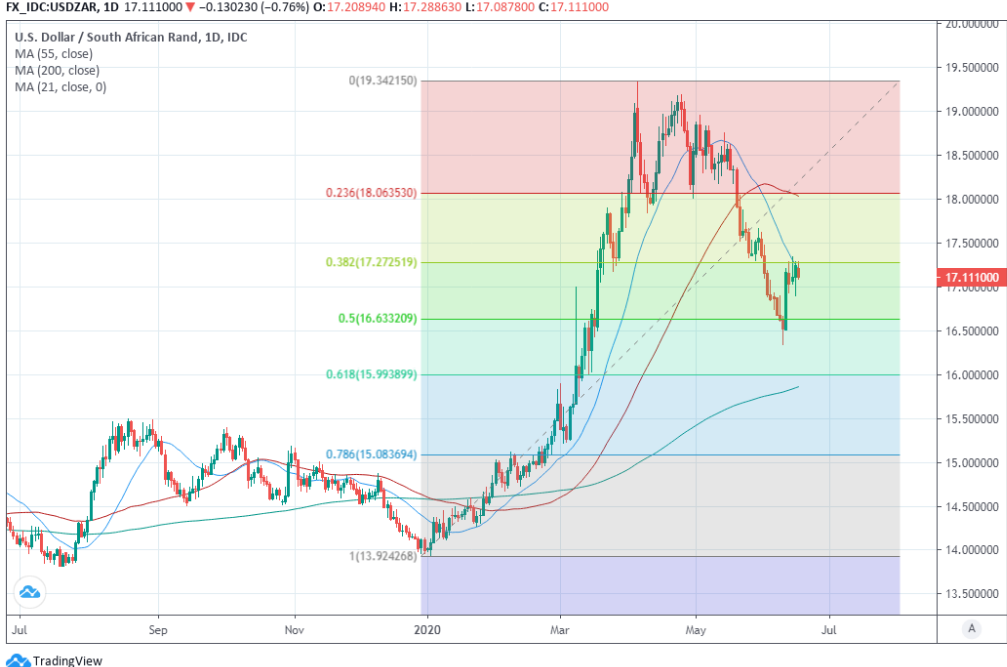South African Rand Steadies as Investors Sweep Tensions, Virus Risks Under Carpet
- Written by: James Skinner
- ZAR outperforms major, emerging rivals as recovery trade continues.
- As investors sweep coronavirus second waves, tensions under carpet.
- ZAR seen retaining upside bias as analysts eye EM risk-reward offering.

© Lefteris Papaulakis, Adobe Images
Achieve up to 3-5% more currency for your money transfers. Beat your bank's rate by using a specialist FX provider: find out how.
The Rand advanced on the Dollar and Pound while outperforming most other rivals Wednesday as investors swept a growing schedule of risks under the carpet in apparent favour of what analysts call the "recovery trade".
South Africa's Rand advanced against all major and emerging market rivals with the exception of the Indonesian Rupiah as risk assets stabilised following weakness inspired by an expansion of a new 'lockdown' in Beijing, with price action resembling that which took place in response to reports of sharp increases in U.S. coronavirus infections.
The reopened U.S. state of Texas declared its highest number of coronavirus related hospital admissions Tuesday, spoiling a mood in the market that had at that point just been lifted a Federal Reserve (Fed), which came across as keen to make amends for a June policy update that was found wanting by the market when it widened the eligibility criteria for its corporate debt purchase programme.
"It was a classic “risk-off” move across all markets around the London close; a move which saw US yields completely give up their post Retail Sales gains and a move that saw key USD resistance levels come under threat," says Eric Bregar, head of FX strategy at Exchange Bank of Canada. "Sentiment magically recovered into the NY afternoon and, while we’re having a hard time explaining this, we would note yesterday’s price action as another example of the marketplace’s desire to ultimately “fade” negative coronavirus headlines."

Above: South African Rand performance on Wednesday. Source: Pound Sterling Live.
The Pound-to-Rand rate has risen more than 2% in the last week while USD/ZAR has climbed 3.67% even after accounting for the South African unit's Wednesday gains, although these moves followed a multi-week sell-off in the greenback that had helped lift the Rand off historic lows.
Adverse geopolitical developments and troublesome coronavirus headlines have competed fiercely for the attention of investors over the course of this week but have been unable to command it more than momentarily, resulting in back-and-forth price action across many exchange rates. The Fed lifted the Rand and emerging market peers on Monday only for them to be blown off course Tuesday by clashes between Indian and Chinese soldiers in a disputed border area.
Chinese authorities upgraded their alert status and cancelled more than half the flights into and out of the capital Beijing Wednesday, worrying markets again but weakness limited and short-lived, demonstrating a recently irrepressible conviction among investors that the worst of the coronavirus-related damage has already been seen. That idea has undermined demand for safe-havens including the Dollar in recent weeks.

Above: Pound-to-Rand rate at daily intervals with Fibonacci retracements of 2020 uptrend.
"The risk-reward for short USD/EM views appears increasingly attractive, in our view," says Zach Pandl, global co-head of FX strategy at Goldman Sachs. "Our highest-conviction views in EM FX are for currencies that combine a high cyclical “beta” with solid macro fundamentals...in a broader Dollar downtrend, even high-“beta” EM currencies with somewhat less-clear macro support, including CLP, COP and ZAR, would be likely to participate."
Recovery trades remain vulnerable to signs of increased momentum in the second waves of coronavirus infections as well as rising geopolitical tensions, but investors were undeterred Wednesday and the Rand was being tipped for continued performance by both fundamental and technical analysts
"USD/ZAR formed a top at its all-time high at 19.3418 (according to CQG data) and dropped to the current June low at 16.3613 before bouncing back. Minor resistance is seen at the 17.6649 late May high and more significant resistance between the March high and April lows as well as the 55 day moving average at 17.8433/18.0810. While remaining below the latter, overall downside pressure should prevail," says Axel Rudolph, a technical analyst at Commerzbank. 
Above: USD/ZAR rate at daily intervals with Fibonacci retracements of 2020 rally.




